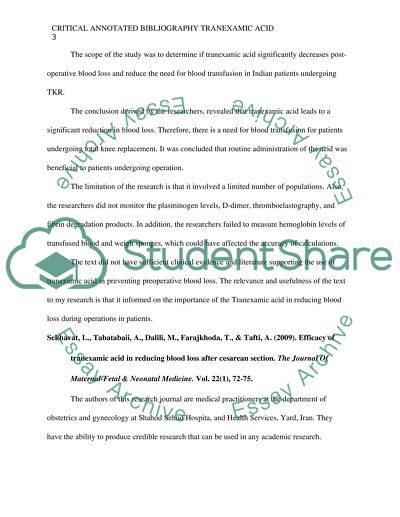Cite this document
(“Critical Annotated Bibliography Tranexamic Acid Essay”, n.d.)
Retrieved from https://studentshare.org/english/1396159-critical-annotated-bibliography-tranexamic-acid
Retrieved from https://studentshare.org/english/1396159-critical-annotated-bibliography-tranexamic-acid
(Critical Annotated Bibliography Tranexamic Acid Essay)
https://studentshare.org/english/1396159-critical-annotated-bibliography-tranexamic-acid.
https://studentshare.org/english/1396159-critical-annotated-bibliography-tranexamic-acid.
“Critical Annotated Bibliography Tranexamic Acid Essay”, n.d. https://studentshare.org/english/1396159-critical-annotated-bibliography-tranexamic-acid.


